databasedev.co.uk - database solutions and downloads for microsoft access
Microsoft Access Articles
- General Microsoft Access Articles
- Microsoft Access 2007 Articles
- Tables
- Queries
- SQL
- Forms
- Reports
- Macros
- Modules & VBA
- Data Models
- Downloads
GUI Design
Resources
Online Shop
Info
Microsoft Access 2010
What’s New For Access 2010’s Ribbon
So what’s new in the Access 2010 version? Actually, plenty! The first thing that is readily available is the FILE menu. Microsoft brought it back for us! Unfortunately though, it is almost identical to the ribbon, as most of the features that are located in it are the same as those that you will find in the 2007 version of Access under the ribbon menu. One thing to watch out for though, is the fact that in some office programs, the "developer" tab is not included in the ribbon by default. To make it visible, simply go to the options menu under the "customize ribbon" tab and put a check mark next to it.
But on to Access related topics…
You may notice now that you can output most of your objects to PDF
and XPS formats. PDF export functionality was also available in 2007,
but the availability of this technology required add-in modules from
Adobe software. That is not the case now. It is simply a part of the
"External Data" tab options. But what is an XPS file? Well,
if you want the truth, it’s really nothing special. Unfortunately,
it represents Microsoft’s attempt to boost their competition with
Adobe’s extremely popular PDF document. In simplistic terms, XPS is
a graphical representation of XML code. So what does that mean? Nothing,
really. XML is most likely going to be the universal "harmonic"
language of the future for the internet, but that doesn’t mean that
it has any special meaning in other scenarios. If you do use this
new export feature, make sure you get some use out of it, because
there aren’t many features that XPS exporting provides that simple
PDF exporting doesn’t.
Another feature that has proven to be useful in 2010 is the "application parts" option under the "create" tab. Notice that, under the "quick start" portion of this feature, you can import template objects from a pre-written template. The best part about this is the fact that the wizard allows you to integrate one of your current tables into a new relationship with the imported template table! Here is an example:
Click on "application parts" and choose the "Users" template:
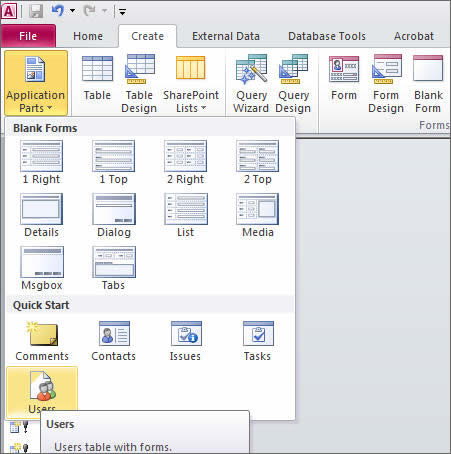
Since I already have a "many" table in my database, I am going to select it as the right side of my relationship:
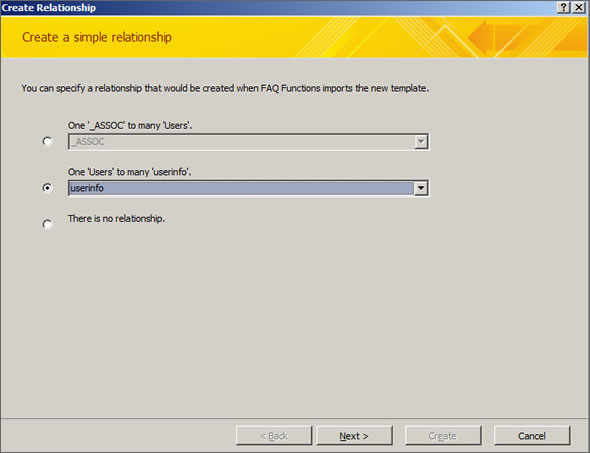
Now, on the last screen I can specify the field name for Access to create in my current table, which will create a one-to-many relationship on the newly-imported "users" table that it generates:
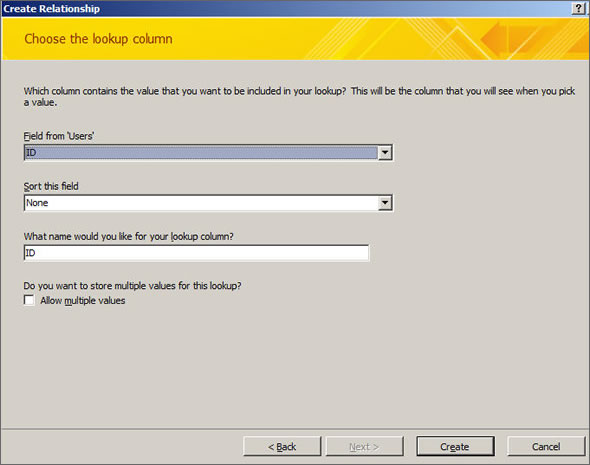
And there you have it! The relationship is created, and in this particular instance, so are two additional forms that can assist you with data entry for this relationship:
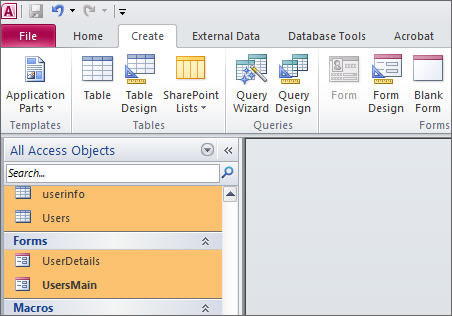
And don’t forget the other useful templates that are in this menu. One of the best ones to me is the new fancy looking message box that you can use. It only takes a little bit of coding to make it work, and the interface is pretty cool:
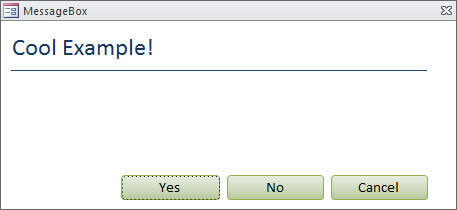
And there you have it…everything the ribbon has to offer you!